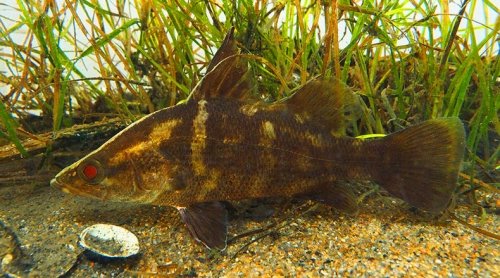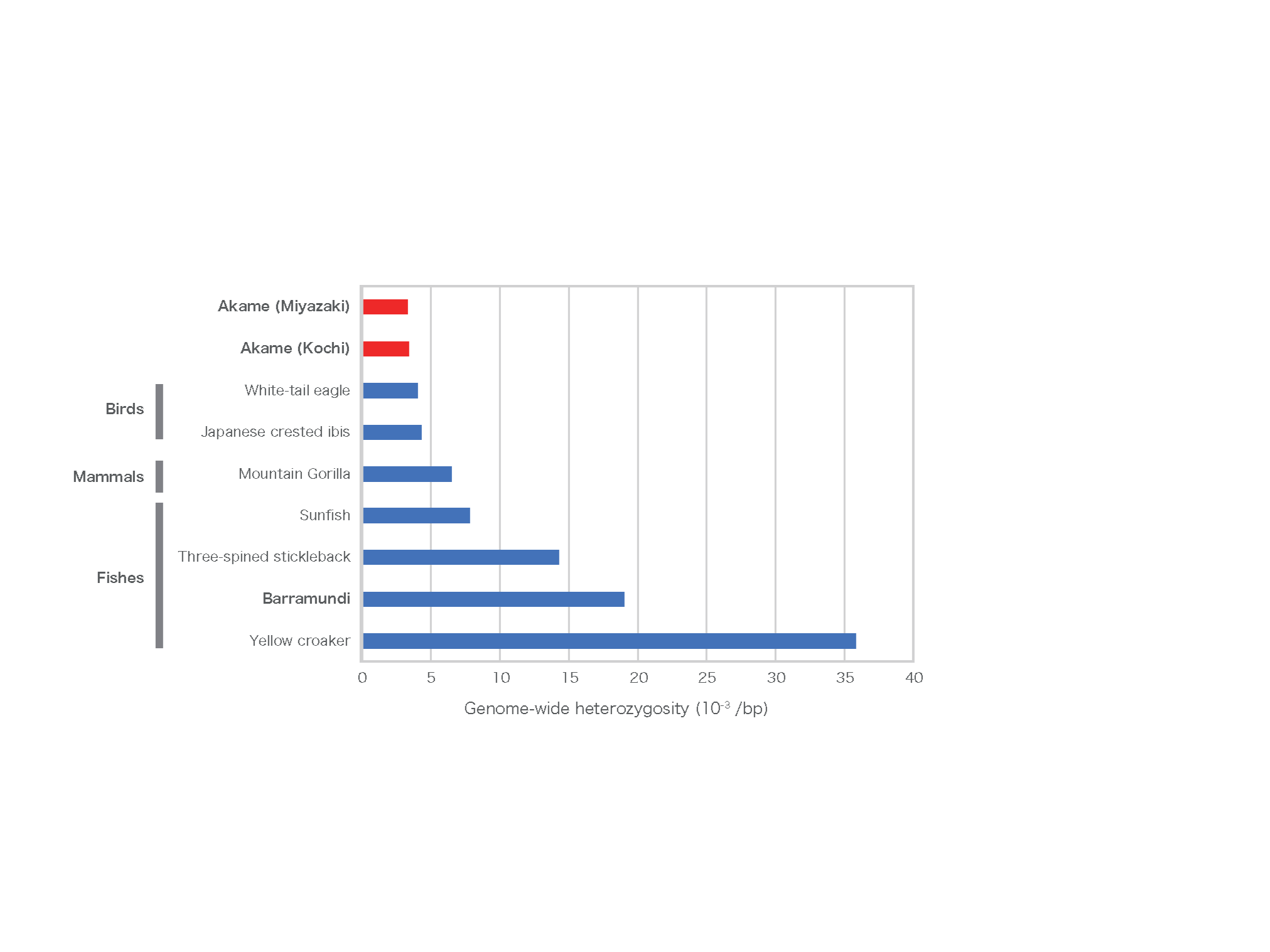Assistant Professor MISHINA Tappei and his research group have revealed the history of the "mythical monster fish" Akame through genome analysis.
POINT
- We determined the whole genome sequences of the endangered large fish species, Akame (Lates Japonicus) , and analyzed its genetic diversity and evolution.
- The genetic diversity within the Akame species is extremely low, and it was found that their population has remained small for approximately 30,000 years.
- While there are few variations across the entire genome, certain genes related to immunity maintain high genetic diversity. It is hypothesized that genetic diversity of important traits for survival, such as resistance to pathogens, have been preserved.
- Analysis of the Akame genome has revealed, the history of how Akame has survived under harsh conditions, indicating the urgent need for conservation measures.
SUMMARY

The Akame is a large, carnivorous fish endemic to Japan, distributed along the Pacific coast of southern Japan, primarily in the coastal areas of Miyazaki and Kochi Prefectures (Figure 1). Despite inhabiting areas close to human settlements, sightings of large individuals are rare, leading anglers and others to refer to it as the 'phantom monster fish.' In recent years, the environments suitable for Akame have been decreasing, raising concerns about its extinction. To understand the genetic diversity (Term 1) of Akame and obtain information necessary for its conservation, we determined the whole genome of one individual each from Miyazaki and Kochi and conducted a detailed analysis.
The overall genetic diversity of the Akame genome is among the lowest for fish species, comparable to that of endangered species such as the Japanese crested ibis and gorillas (Figure 2). Additionally, it was found that the effective population size (Term 2) of Akame has remained extremely low, around 1,000 individuals, from approximately 30,000 years ago to the present (Figure 3).
On the other hand, detailed analysis of the Akame genome revealed that multiple genomic regions, primarily containing genes related to the immune system, maintain high genetic diversity. This indicates that the genetic variations necessary for maintaining resistance to pathogens have been preserved through balancing selection (Term 3).
Furthermore, a comparison of genetic variations between Akame and its closely related species, the barramundi (Term 4), which inhabits tropical regions, revealed positive selection (Term 5) in many Akame genes. Based on the characteristics of these genes and the distribution of other species in the same genus, it is believed that after diverging from an ancestral species that inhabited tropical regions, only Akame underwent adaptive evolution to temperate regions.
These results indicate that while the genetic diversity of Akame has decreased due to long-term survival with a small population size, important variations for survival have been maintained. This reflects the history of Akame's unique evolution in temperate regions and its survival in small numbers.
This research was published online in the August 2024 issue of Genome Biology and Evolution, a journal issued by the Society for Molecular Biology and Evolution (SMBE) in the United States.



Comment from the researcher
Our research has allowed us to gain insights into the evolutionary history of the Akame through genome analysis. While genes important for individual survival, such as those related to the immune system, maintain certain variations, the effective population size of the Akame is extremely small. This suggests that many harmful mutations may have accumulated in the genome. The seagrass beds at river mouths, which are suitable environments for the growth of Akame juveniles, are decreasing in both Kochi and Miyazaki. As a result, the survival of the Akame is in a precarious situation. Therefore, it is crucial to steadily advance conservation efforts along with their habitats.
GLOSSARY
1.Genetic diversity: The variation in genes and genotypes within a species. Organisms with low genetic diversity are more prone to extinction because they are less likely to possess genes that allow them to adapt to changing environments.
2.Effective population size: A generalized measure of the number of individuals in a genetically homogeneous group (population) that actually contribute to reproduction.
3.Balancing selection: A type of selection that actvely maintains multiple different alleles within a population.
4.Barramundi: A large predatory fish of the same genus as the Akame, widely distributed along the coasts of tropical regions from Southeast Asia to northern Australia. Previously, the Akame was considered the same species as the Barramundi, but in 1984, it was classified as a separate species.
5.Positive selection: A type of selection where newly arisen mutations become advantageous. Genes related to traits that have spread through a population due to positive selection in the recent past show traces of this selection.
Paper Information
Title: Draft genome of akame (Lates japonicus) reveals possible genetic mechanisms for long-term persistence and adaptive evolution with low genetic diversity.
Authors: Yasuyuki Hashiguchi, Tappei Mishina, Hirohiko Takeshima, Kouji Nakayama, Hideaki Tanoue, Naohiko Takeshita, Hiroshi Takahashi
Yasuyuki Hashiguchi, Department of Biology, Faculty of Medicine, Osaka Medical and Pharmaceutical University
Tappei Mishina, Faculty of Agriculture, Kyushu University, and Center for Biosystems Dynamics Research, RIKEN
Hirohiko Takeshima, Satoyama Satoumi Lake Research Institute, Fukui Prefecture
Kouji Nakayama, Graduate School of Agriculture, Kyoto University
Hideaki Tanoue, Fisheries Agency
Naohiko Takeshita, Japan Fisheries Research and Education Agency, Fisheries University
Hiroshi Takahashi, Japan Fisheries Research and Education Agency, Fisheries University
Research-related inquiries












 Contact
Contact
 Access Map
Access Map

